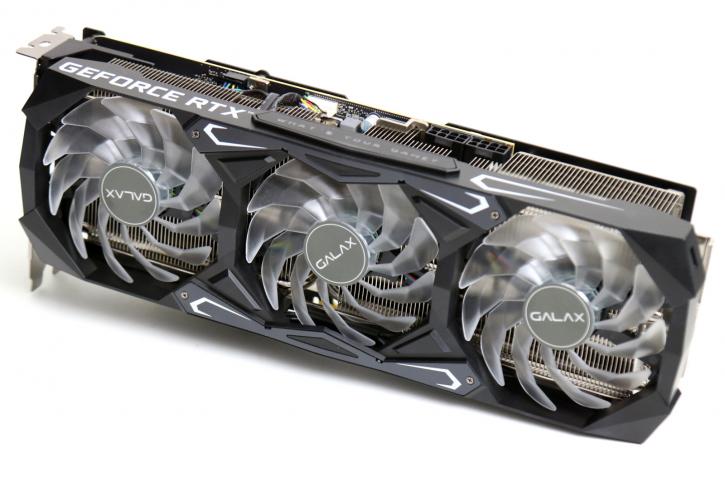Introduction
GALAX GeForce RTX 3080 SG 10G review
Are you ready for some serious gaming? Well, meet the GeForce RTX 3080 SG (yeah, Serious Gaming) from none other than GALAX. Of course, you'll see these products in the EU under the KFA2 brand. Serious gaming is what this card is all about. An RTX 3080 fed with a triple-fan solution with a differently laboriously customized product, with a twist and an aim to perform at low acoustics combined with a lovely design card, let's start this review, shall we?
It was 2017 when the name Ampere as a GPU architecture surfaced onto the web, and up-to earlier this year, NVIDIA has not listed this name in any of its roadmaps on the consumer side. It was with military-level secrecy that the Ampere consumer part was developed. Ampere, of course, is the base unit of electric current in the international system of units. But the GPU is named after André-Marie Ampère, a French mathematician and physicist, considered the father of electrodynamics. NVIDIA has a track record of naming their GPU architectures after mathematicians and physicist or closely related fields, to name a few; Pascal, Fermi, Kepler, Maxwell, and more recently, Turing. While it was no secret that the new GPUs would be based on Ampere, we've seen much discussion about fabrication nodes, architecture, and specifications. Still, everybody seems to have forgotten that Ampere already launched earlier this year for the HPC market. The very first product based on Ampere was the NVIDIA Tesla A100, outfitted with a GA100 Ampere GPU based on 7nm fabricated at TSMC; that product holds 54 billion transistors and has 6912 shader cores. September 1st of the year 2020, NVIDIA announced three Ampere graphics cards in its initial launch wave. A week before announcements, specifications of the GeForce RTX 3080 and 3090 took a twist; the shader core count doubled up from what everybody expected. The GPUs are fabricated on an 8nm node derived from Samsung. This process is a further development of Samsung's 10nm process; no EUV is applied in production just yet. The first wave of announcements would see the GeForce RTX 3080 and 3090 being released first, and as a bit of a surprise, the GeForce RTX 3070 would be arriving in roughly the same timeframe as well. The initial Ampere for consumers launch entails the GeForce RTX 3070 8GB GDDR6, RTX 3080 10GB GDDR6X, and a 24GB GDDR6X based flagship, the GeForce RTX 3090. The lineup brings Gen2 ray-tracing cores and the 3rd iteration tensor cores. These cards all will be PCIe 4.0 interface compatible and offer HDMI 2.1 and DisplayPort 1.4a.
The GALAX GeForce RTX 3080 SG (Serious Gaming) 10G is once again fitted with that NVIDIA GA102 GPU; it has a whopping 8704 Shader cores activated and is paired with 10GB of all new GDDR6X graphics memory. The card is based on a semi-passive design; the three fans start to spin and cool once the GPU warms up. The card is rated with a 325W power draw, the same as the reference design. This indicates it will perform a notch better, alright. The all-new GALAX Serious Gaming Edition has something unique, you'll receive a 1-Clip Booster (= extra fan), which can be installed at the rear backplate side. When the fan is at the back the PCB is in fact much shorter than the cooler and the key is to allow air to flow as easily as they could, GALAX built more extensive gaps that allow air to flow through there. Weighing in at close to 1.5kg, junior here also has been sized quite big, 329x130x61mm with the use of an included bracket. The out of the box boost clock for this product is a reference, 1710 MHz (1710 MHz is a reference), and it's memory clocked at reference 19 Gbps (19 Gbps reference). With GALAX OC software you can get an extra 15 MHz, but really that isn't even worth starting up the software application needed for it if you ask me.
Ready to see it? Boom ...


